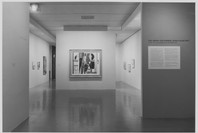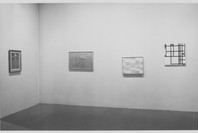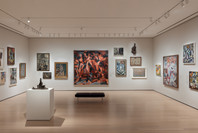Mondrian first encountered Cubism in his native Holland in 1911; he moved to Paris the same year. Gripped by the visual experiments unfolding in the French capital, he adopted Cubism’s core principles but quickly pushed them to new extremes: he expelled recognizable references to subjects and brought Cubism’s underlying grid structure to the fore. This delicately hued painting—aptly compared to a “map” or “labyrinth” by one critic in March 1914—is thought to have originated from the artist’s study of the facade of the church of Notre Dame des Champs near Montparnasse.
Gallery label from 2024





